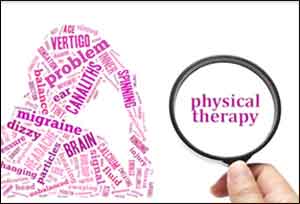- Home
- Editorial
- News
- Practice Guidelines
- Anesthesiology Guidelines
- Cancer Guidelines
- Cardiac Sciences Guidelines
- Critical Care Guidelines
- Dentistry Guidelines
- Dermatology Guidelines
- Diabetes and Endo Guidelines
- Diagnostics Guidelines
- ENT Guidelines
- Featured Practice Guidelines
- Gastroenterology Guidelines
- Geriatrics Guidelines
- Medicine Guidelines
- Nephrology Guidelines
- Neurosciences Guidelines
- Obs and Gynae Guidelines
- Ophthalmology Guidelines
- Orthopaedics Guidelines
- Paediatrics Guidelines
- Psychiatry Guidelines
- Pulmonology Guidelines
- Radiology Guidelines
- Surgery Guidelines
- Urology Guidelines
Physical therapy improves incontinence, pain in men after prostatectomy

DALLAS - The rehabilitation of post-prostatectomy urinary incontinence has traditionally focused on pelvic floor strengthening exercise. Men with urinary incontinence after prostate surgery are advised therapy to strengthen pelvic muscles as the standard treatment for decades. But a new study suggests that this may not be the best approach.
UT Southwestern's Departments of Urology and Physical Medicine and Rehabilitation researchers have found that physical therapy reduces incontinence, pain in men after prostate surgery. The study now online shall be published soon in an upcoming issue of International Urology and Nephrology.
Using exercise in an attempt to strengthen a tight or spasming muscle can be counterproductive, making the muscle tighter instead of stronger, says Michelle H. Bradley, a physical therapist with the Comprehensive Pelvic Rehabilitation Program in the Physical Medicine Department and a co-author of the study.
The study examined records from post-prostatectomy patients with stress urinary incontinence - meaning loss of bladder control while sneezing, bending over, etc. - who received physical therapy between 2009 and 2014. Researchers found most had some muscle "overactivity" - muscle tightness or spasms - rather than just muscle weakness, says Kelly M. Scott, M.D., an associate professor in the Department of Physical Medicine and Rehabilitation at UT Southwestern and first author of the study.
Of the 136 therapy patients whose records were reviewed for this study, 25 had only weak, or "underactive," pelvic floor muscles, 13 had overactive or tight muscles, and 98 had evidence of both, according to the study.
"That was actually a very surprising finding," Scott says of a large number of patients with both tight and weak pelvic floor muscles.
Tense muscles can be a protective mechanism after an injury from surgery, she explains. Part or all of the prostate surrounding the urethra is removed in a prostatectomy, usually because of cancer. "But the study's findings are counter to the prevailing idea, which is that these men must have very weak muscles."
Almost every patient has incontinence immediately after a prostatectomy, Scott says, but that percentage drops to about 5 to 20 per cent within two years after surgery. Those who haven't seen improvement within two to six months should seek physical therapy, she says.
Standard treatment has focused on strengthening exercises, sometimes using so-called Kegel exercises that involve repetitions of contracting, then releasing, muscles. Recently, doctors and therapists have begun evaluating patients to determine the right therapy rather than assuming the problem was muscle weakness, Scott says. However, there have been few, if any, studies looking at the effectiveness of this targeted approach, she says.
"This is perhaps the first study to look at the type of muscle dysfunction present in men after they've had this surgery. Are the muscles actually weak and need to be strengthened, or are they actually tight and just need to be relaxed and lengthened?" she asks.
After a therapist's evaluation, the men - all patients of Claus Roehrborn, M.D., senior author of the study and a surgeon, professor, and chair of the Department of Urology - received therapy to either relax or strengthen their pelvic muscles.
In 87 per cent, incontinence improved, with 58 per cent achieving what is considered the optimal improvement of needing two or fewer protective pads per day, according to the study.
The pain was also a problem for 27 per cent of the patients, the study showed. The number with pain dropped to 14 per cent by the end of therapy, which averaged slightly more than four sessions. In those who still had some pain, the reported level was reduced. "This is the first study to show a decrease in post-prostatectomy pain after therapy," Scott says.
These findings should encourage others to launch studies to test individualized physical therapy, Roehrborn says.
"If patients can get stronger by relaxing their muscles, then there's more work to be done to figure out the best way to treat these patients," Scott says.
For more details click on the link: http://dx.

Disclaimer: This site is primarily intended for healthcare professionals. Any content/information on this website does not replace the advice of medical and/or health professionals and should not be construed as medical/diagnostic advice/endorsement or prescription. Use of this site is subject to our terms of use, privacy policy, advertisement policy. © 2020 Minerva Medical Treatment Pvt Ltd